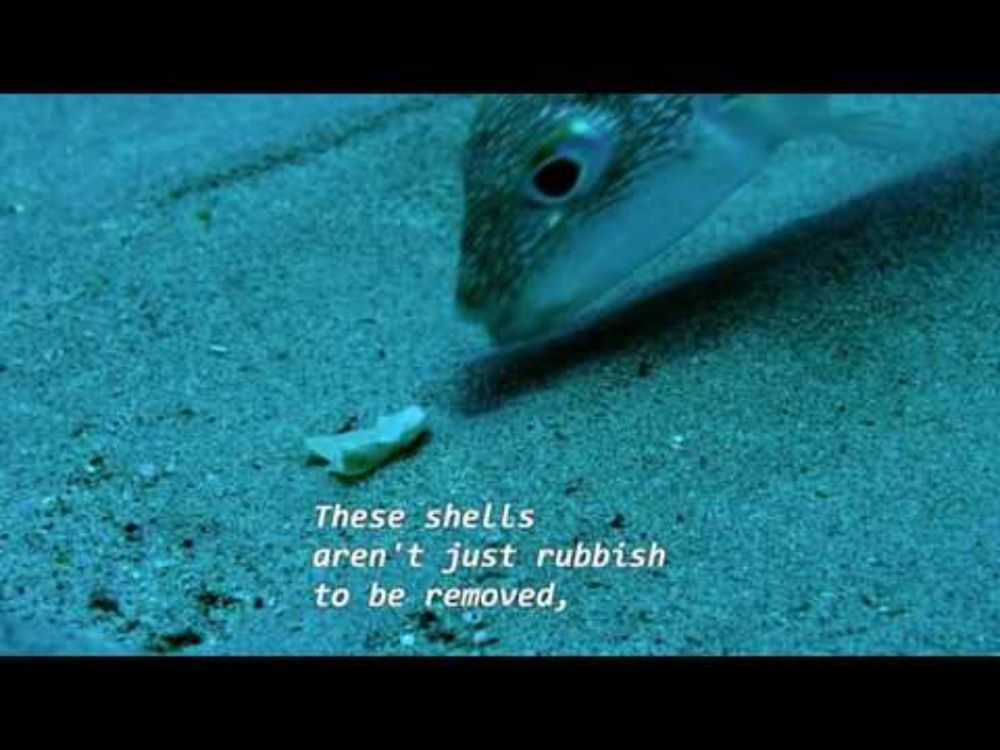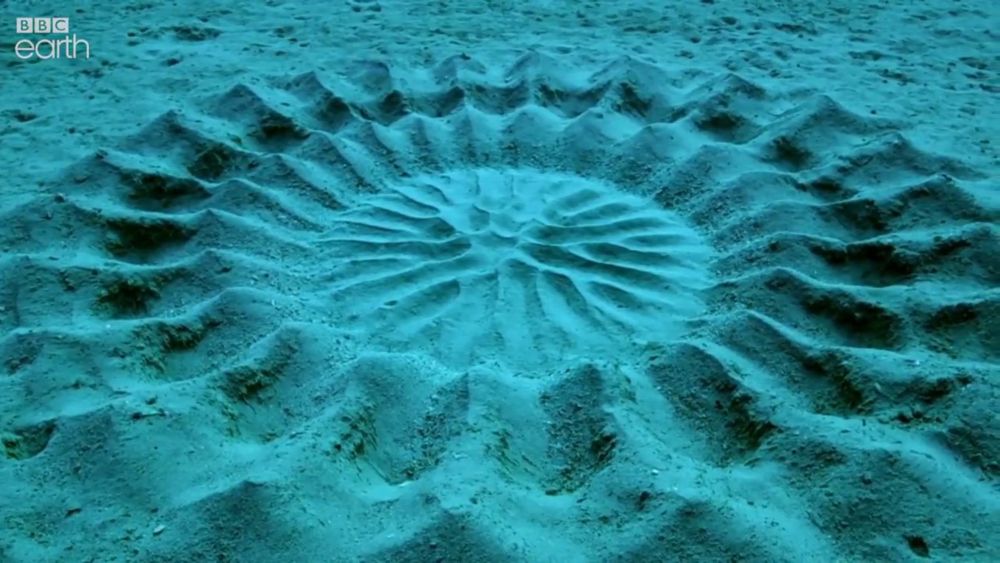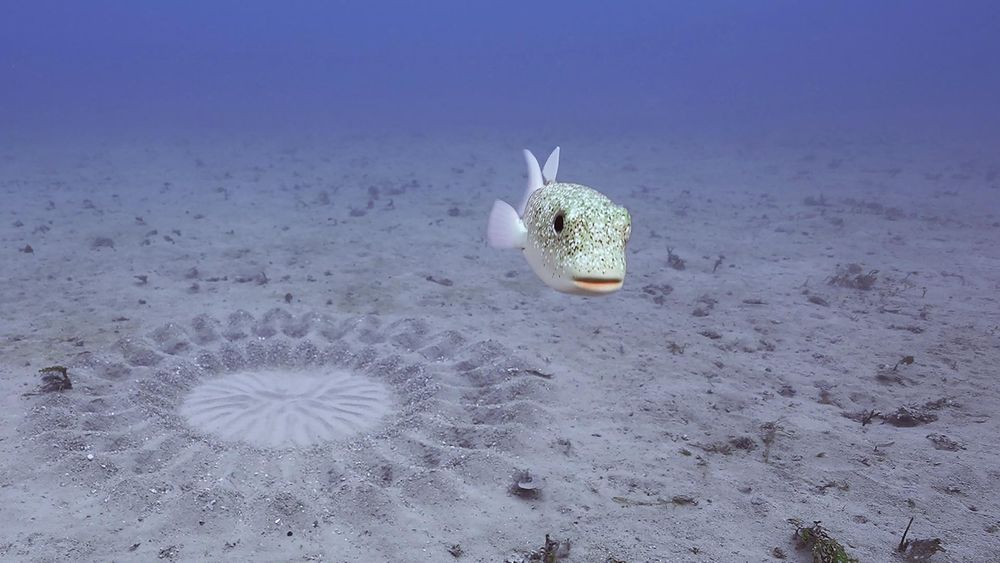In 1995, divers near the Ryukyu Islands off Japan spotted these elaborate mandala-like art in the sand of the ocean's floor.
They were elaborate 2 meter wide sculptures with fluting, shell ornaments placed at ridges, sand sorted by granularity, both consistent in design & unique.
(📷: BBC Earth)
It wasn't until *2013* that the artist was revealed to be:
the white-spotted pufferfish (Torquigener albomaculosus), a tiny fish no longer than 10 cm.
The males create these elaborate, ornamented nests to attract females, then maintain them against dispersal by currents.
It can take a week for the fish to create the giant 'art installation'. If a female approves, she'll approach, they'll release gametes in the center, the female will leave.
The male then goes into parenting mode, no longer maintaining the art, but protecting the fertilized eggs from predators.
5 days later, the eggs hatch & the male moves on, never re-using the same site in future mating seasons.
There's a nice bit on 'BBC Earth' that shows the process & impressive SCALE of this creation & is narrated by Sir David Attenborough.

BBC-Earth , Life Story Ep05 - Courtship - Puffer Fish (From Netflix)
YouTube video by TaxusQc
A very good piece of evidence (I think) that the concept of aestethics are not a human-only concept.
From plumage and nesting in birds we see it clearly, but we see it here as well, in fish.
I think what's wild is that, beyond us appreciating it from some ecoligical perspective, those structures *do* look cool. Like, I know we can't say I appreciate it for the exact same reason, but that it's beauty isn't lost on us speaks to some common thread tying us to fish and birds and so on.
May 3, 2025 14:33


